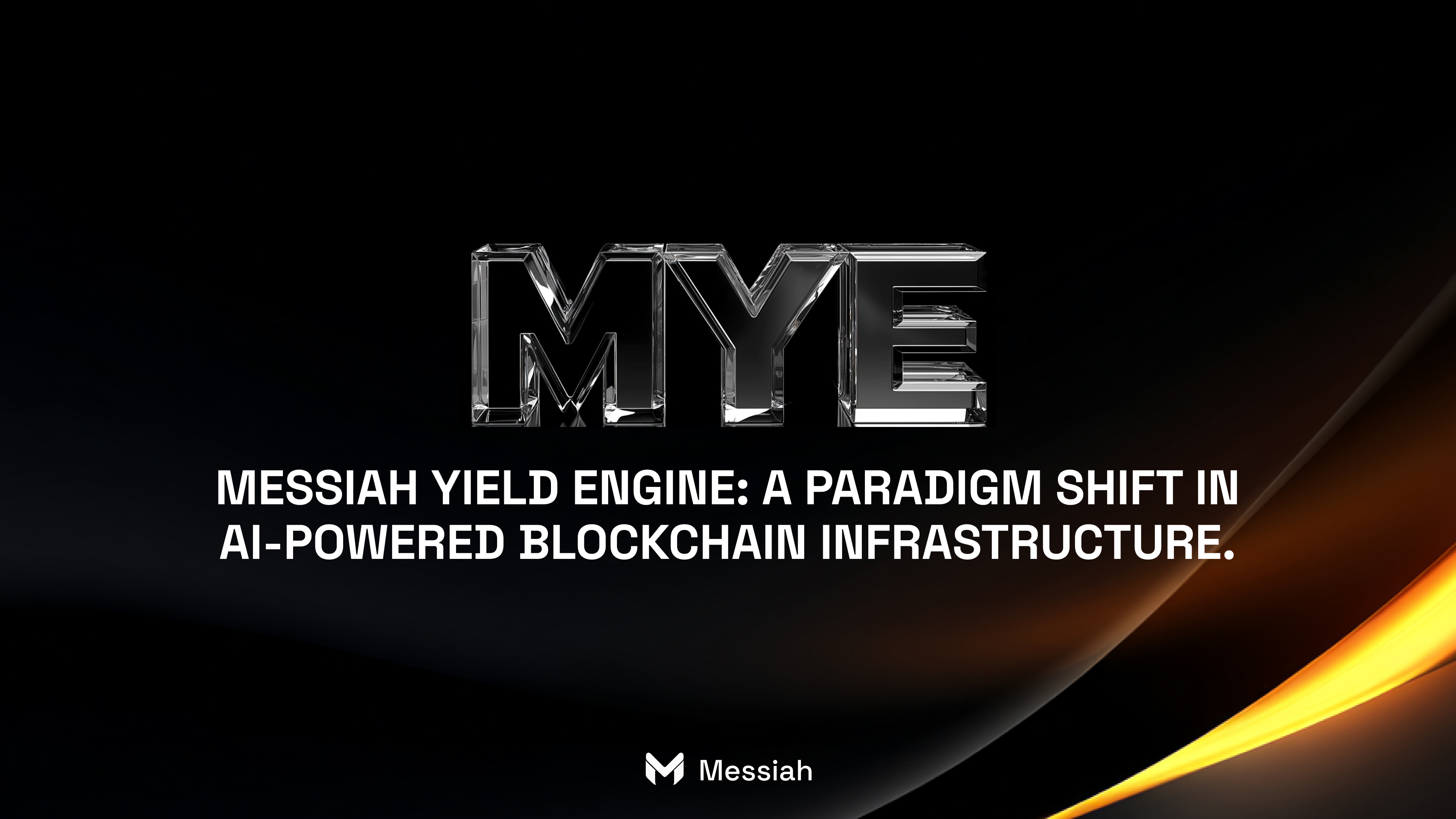Treasury and Bonding Protocol

Messiah is building the next generation of decentralized infrastructure by combining node operations, AI-driven treasury management, and sustainable tokenomics into a unified system.
The ecosystem is designed around three pillars:
- NodeHub — the infrastructure layer for deploying and managing nodes.
- MYE (Messiah Yield Engine) — an AI agent that governs treasury allocation and node deployment.
- $MSIA — the access and revenue-sharing token of the ecosystem.
1. NodeHub: Infrastructure Layer
NodeHub is a high-performance fabric for blockchain infrastructure.
It provides programmatic access to critical network resources and forms the foundation of the Messiah ecosystem.
Key features include:
- Validator and node deployment across supported networks.
- RPC endpoints and developer-facing node services.
- Scalable orchestration for validator pools, media nodes, and specialized infrastructure.
Revenue from NodeHub services contributes directly to the protocol treasury.
2. MYE: Messiah Yield Engine
MYE is the AI brain of the protocol.
It is a proprietary Deep Reinforcement Learning agent that fuses infrastructure management with treasury optimization.
Core responsibilities:
- Infrastructure Yield: Automates deployment and management of validator nodes (e.g., Ethereum validators). This generates sustainable real yield while contributing to decentralization.
- Stablecoin Yield Farming: Allocates to safe yield strategies across DeFi protocols to provide resilience against market downturns.
- Blue-Chip Allocation: Builds a diversified portfolio of established digital assets to capture upside and strengthen treasury backing.
- Liquidity Management: Ensures the treasury remains well-capitalized to support $MSIA and protocol operations.
The combination creates a self-regulating system that maximizes capital efficiency while reinforcing decentralized networks.
3. $MSIA: Access & Revenue Sharing
$MSIA represents a stake in the ecosystem.
It serves three primary roles:
a) Revenue Sharing ("Staking 2.0")
- Stakers receive a share of protocol revenue.
- Sources of revenue include:
- NodeHub platform fees.
- Bonding protocol profits.
- Future MYE agent service fees.
- Instead of a fixed APR, rewards are dynamically based on real revenue.
b) Access to MYE
Staking $MSIA grants access to MYE’s services through a tiered system:
- Tier 1 - Base Access: Basic analytics and small-scale usage.
- Tier 2 — Power Access: Advanced allocation strategies, deeper analytics, and larger node management capacity.
- Tier 3 — Institutional Access: For protocols or large operators, requiring significant $MSIA stake.
c) Node & RPC Benefits
- Discounts on RPC services.
- Priority access to endpoints during network congestion.
4. Bonding Protocol: Treasury Engine
The bonding protocol bootstraps and diversifies the treasury.
Mechanism:
This cycle creates real asset backing for the $MSIA token and ensures long-term stability.
- Bond Sales: Users exchange assets (e.g., ETH, USDC) at a discount for vested $MSIA.
- Treasury Growth: Acquired assets are deployed by MYE across validator, yield, and portfolio strategies.
- Revenue Share: A portion of profits flows back to stakers.
- Flywheel Effect:
- Higher staking rewards increase $MSIA demand.
- Stronger demand supports token value, making bonding more attractive.
- Treasury accumulates real assets, strengthening protocol sustainability.